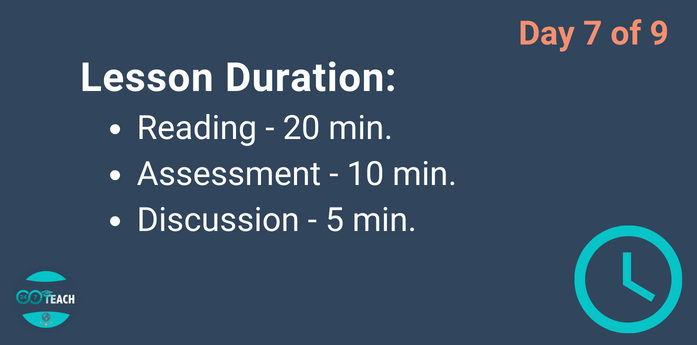Lesson 7: Financial Modeling
Prefer to listen to this lesson? Click here.
Workshop Scenario
Please think of yourself in the following scenario as you complete this lesson.
You’ve decided to be the youngest Real Estate investor in your community. You realize that if you are successful, you can become wealthy and retire at an early age.
Your goal is to learn as much as possible about real estate and real estate investing now so that you can own seven (7) properties by the time you are 21.
In the previous lesson, you began to understand the concept of leverage within Real Estate. In this lesson, we’ll discuss financial modeling and how it can help you in your investing journey.
Lesson Objectives
Develop basic financial modeling skills for real estate investments
Apply these concepts and understand the financial implications of different investment scenarios.
As you read, please consider the following question:
What is the role of financial modeling in real estate investment analysis? Explain how it helps investors make informed decisions.
Introduction to Financial Modeling in Real Estate
Financial modeling is a crucial tool used in real estate investment analysis. It involves creating mathematical models to evaluate the financial performance and feasibility of real estate investments. By using financial modeling techniques, investors can make informed decisions about potential investments, assess profitability, and minimize risks. Let's explore the importance of financial modeling in real estate and understand some key techniques used in this field.
Understanding the Importance of Financial Modeling in Real Estate Investment Analysis
Financial modeling plays a vital role in real estate investment analysis for several reasons:
a. Evaluating Profitability: Financial modeling helps determine the potential profitability of a real estate investment. It allows investors to project future cash flows, estimate returns, and assess the viability of the investment.
b. Assessing Feasibility: Through financial modeling, investors can evaluate the feasibility of a real estate project. They can analyze if the investment aligns with their financial goals, risk tolerance, and investment strategy.
c. Making Informed Decisions: Financial modeling provides investors with valuable insights and data-driven information. It enables them to make informed decisions based on accurate projections and analysis.
Overview of Key Financial Modeling Techniques in Real Estate
Several financial modeling techniques are commonly used in real estate investment analysis. Understanding these techniques will help you evaluate and analyze potential real estate investments effectively. Some of the key techniques include:
a. Cash Flow Projections: Cash flow projections estimate the expected cash inflows and outflows over the investment period. It includes factors such as rental income, operating expenses, debt service (loan payments), and potential resale proceeds. By forecasting cash flows, investors can assess the financial viability of an investment.
b. Return on Investment (ROI): Return on Investment measures the profitability of an investment. In real estate, different ROI metrics are used, such as cash-on-cash return and internal rate of return (IRR). These metrics help investors understand the return they can expect from their investment and compare different investment opportunities.
c. Net Operating Income (NOI): Net Operating Income is a key financial metric used in real estate analysis. It represents the income generated by a property before accounting for debt financing and taxes. NOI helps investors evaluate the income-generating potential of a property and compare different properties based on their operating income.
d. Cap Rates: Capitalization rates (cap rates) are used to estimate property values and compare investment opportunities. Cap rates reflect the relationship between a property's net operating income (NOI) and its market value. Higher cap rates indicate higher potential returns, while lower cap rates suggest lower returns but possibly higher property value.
How does financial modeling contribute to the evaluation of real estate investments in terms of profitability and feasibility?
What key financial modeling techniques are used in real estate investment analysis, and how do they assist investors in making informed decisions?
Key Factors to Examine
Examining key factors of real estate investing is essential for understanding the dynamics of the market and making informed investment decisions. Here are the key factors that play a significant role in real estate investing:
Supply and Demand: The balance between supply and demand is a critical factor in real estate investing. Understanding the current and projected supply of properties in a particular area helps determine the level of competition and potential rental or sale prices. Similarly, analyzing the demand for properties in a given location helps identify areas of high market demand and potential investment opportunities.
Vacancy Rates: Vacancy rates indicate the percentage of unoccupied rental properties in a specific market. Monitoring vacancy rates helps investors gauge the level of demand for rental properties, assess market saturation, and make decisions about rental pricing and property management strategies. Lower vacancy rates generally indicate a stronger rental market with potential for stable income streams.
Population Growth: Population growth has a direct impact on real estate demand. Analyzing population trends helps investors identify areas experiencing significant growth, which often leads to increased demand for housing and potential appreciation in property values. Understanding demographic shifts, such as the influx of young professionals or aging populations, can inform investment decisions targeting specific market segments.
Economic Indicators: Economic indicators, such as GDP growth, employment rates, and interest rates, have a substantial influence on real estate investing. A strong economy typically correlates with increased consumer confidence, demand for properties, and potential rental income. Conversely, economic downturns can impact property values, rental demand, and overall investment opportunities. Monitoring economic indicators provides insights into the broader market conditions and helps investors assess the potential risks and rewards of their investments.
By examining these key factors, real estate investors can gain a comprehensive understanding of the market dynamics in a particular area. This knowledge allows them to identify areas of potential growth, assess risks, determine optimal pricing strategies, and align their investment decisions with the prevailing market conditions. Ultimately, analyzing these factors helps investors make informed choices and maximize their chances of success in the real estate market.
Gathering and Interpreting Data
Gathering and interpreting data to evaluate local and national real estate markets is a crucial skill for anyone involved in the real estate industry. Here are some key steps and considerations to effectively gather and interpret data:
-
Start by identifying reputable and reliable sources of real estate data. These can include government agencies, industry associations, market research firms, real estate websites, and local MLS (Multiple Listing Service) databases. These sources often provide data on property sales, rental rates, vacancy rates, new construction permits, demographic information, and economic indicators.
-
Familiarize yourself with the key data points that are relevant to evaluating real estate markets. These may include property prices, rental yields, absorption rates, inventory levels, days on market, population growth, employment statistics, and economic indicators such as GDP growth, interest rates, and unemployment rates. Understanding these data points will give you a comprehensive view of the market conditions.
-
When evaluating a specific local real estate market, consider factors such as neighborhood characteristics, school districts, proximity to amenities, transportation infrastructure, and zoning regulations. These factors can greatly impact property values and demand, so gathering data specific to the local area is essential for accurate analysis.
-
Employ comparative analysis to interpret the gathered data effectively. Compare historical data to identify trends and patterns over time. Additionally, compare the local market data with national or regional trends to understand how the local market fits into the broader context. This comparison helps identify outliers, anomalies, and unique market dynamics.
-
Real estate markets can vary significantly within a single city or region. Analyze data by segmenting the market based on property types (residential, commercial, industrial), price ranges, or geographic areas. This segmentation provides a more nuanced understanding of market trends and allows for targeted analysis.
-
Data visualization tools can be invaluable in interpreting and presenting complex real estate data. Use tools like charts, graphs, maps, and infographics to visualize trends, patterns, and relationships within the data. This visual representation makes it easier to identify key insights and communicate findings to others.
-
Real estate markets are dynamic and subject to change. Continuously monitor and update your data sources to stay current with market trends. Regularly analyze new data and adapt your strategies and decisions accordingly. Being proactive and agile in data gathering and interpretation ensures that you have the most accurate and relevant information at all times.
By following these steps and considering the nuances of local and national real estate markets, you can gather and interpret data effectively. This data-driven approach enables you to make informed decisions, identify investment opportunities, and navigate the real estate landscape with confidence.
In Conclusion:
In conclusion, financial modeling is a powerful tool in real estate investment analysis. It helps evaluate the profitability, feasibility, and risks associated with real estate investments. By using techniques such as cash flow projections, ROI analysis, NOI assessment, and cap rates, investors can make informed decisions and maximize their chances of success in the real estate market.
Closing Assessment:
Please respond to the lesson email with answers to the following questions, and one of our real estate mentors will respond with feedback.
What is the role of financial modeling in real estate investment analysis? Explain how it helps investors make informed decisions.
Advance your understanding by participating in the 24/7 Discussion Forum:
1. Please answer the following questions in the comment section below and interact with learners from around the world.
Compare and contrast two key financial metrics used in real estate investment analysis: Return on Investment (ROI) and Net Operating Income (NOI). Discuss their significance and how they assist investors in evaluating potential investments.
A real estate investor is considering two properties with different cap rates. Property A has a cap rate of 6%, while Property B has a cap rate of 8%. Based on this information, explain the implications of the cap rates on potential returns and property values. (Open-ended response)
2. Please read and reply to other learners’ answers in the forum by stating if you agree or disagree with their answers and why. Your replies should offer new substantiated ideas or thoughtful questions.










